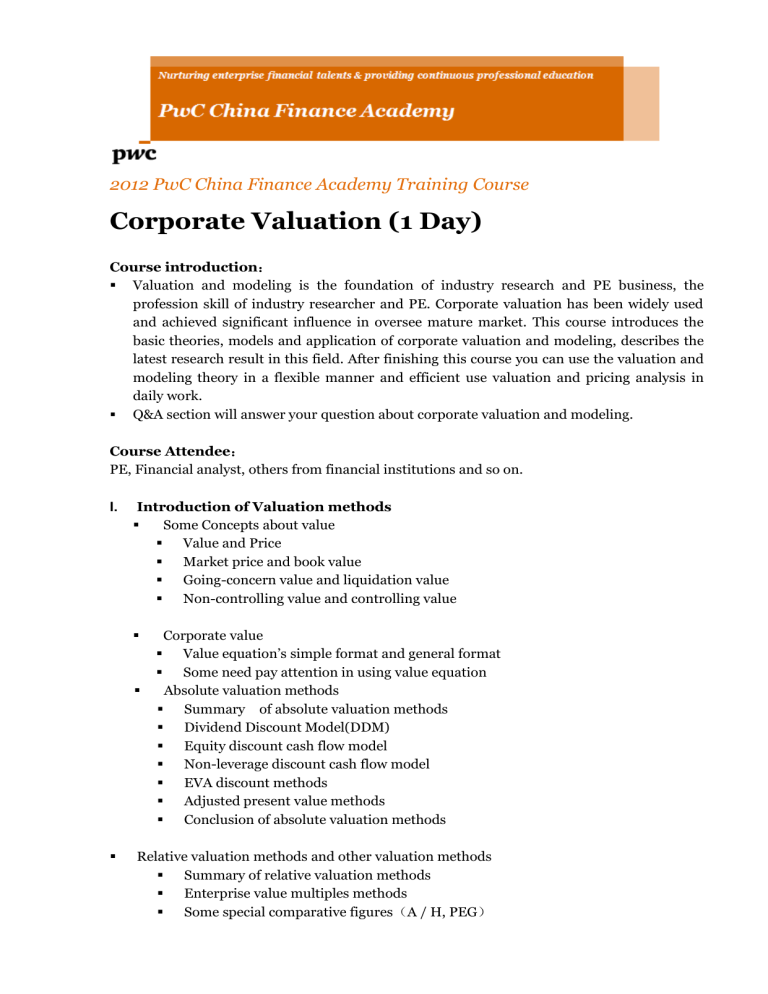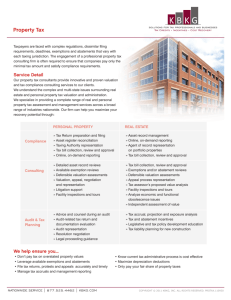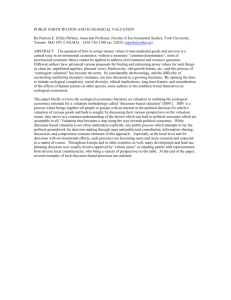
2012 PwC China Finance Academy Training Course
Corporate Valuation (1 Day)
Course introduction:
Valuation and modeling is the foundation of industry research and PE business, the
profession skill of industry researcher and PE. Corporate valuation has been widely used
and achieved significant influence in oversee mature market. This course introduces the
basic theories, models and application of corporate valuation and modeling, describes the
latest research result in this field. After finishing this course you can use the valuation and
modeling theory in a flexible manner and efficient use valuation and pricing analysis in
daily work.
Q&A section will answer your question about corporate valuation and modeling.
Course Attendee:
PE, Financial analyst, others from financial institutions and so on.
I.
Introduction of Valuation methods
Some Concepts about value
Value and Price
Market price and book value
Going-concern value and liquidation value
Non-controlling value and controlling value
Corporate value
Value equation’s simple format and general format
Some need pay attention in using value equation
Absolute valuation methods
Summary of absolute valuation methods
Dividend Discount Model(DDM)
Equity discount cash flow model
Non-leverage discount cash flow model
EVA discount methods
Adjusted present value methods
Conclusion of absolute valuation methods
Relative valuation methods and other valuation methods
Summary of relative valuation methods
Enterprise value multiples methods
Some special comparative figures(A / H, PEG)
Conclusion of relative valuation methods
II.Preparation before modeling
Consideration before modeling
Modeling content, reason and tools
Some question before modeling
Source and collection of historical data
Source of historical data
Collection of historical data
Forecast the assume data sources
Corporation historical data
Corporation development plan
Industry Characteristics and development rule
Macroeconomic forecasts
III.Technology in modeling by using Excel
Excel ‘s common shortcuts
Excel’s common function
SUM、SUMIF、SUMPRODUCT
If、Max、Min
COUNT、COUNTA、COUNTIF、CHOOSE、VLOOKUP、HLOOKUP、INDEX、
OFFSET
IV.Financial forecast modeling
Structure of financial forecast modeling
Steps of financial forecast
Forecast income statement
Forecast balance sheet statement
Cash flow forecast and check with the model
Analysis of financial result
Check the financial forecast model
Tie in check of the model
Reasonable check of the model
Conclusion of financial forecast modeling
V. Case study
Build valuation model
© 2012 PricewaterhouseCoopers. All rights reserved. "PricewaterhouseCoopers" refers to the China
firm of PricewaterhouseCoopers or, as the context requires, the network of member firms of
PricewaterhouseCoopers International Limited each of which is a separate and independent legal
entity.







